
10 Places to Celebrate the Moon Landing's 50th Anniversary
Celebrate the golden anniversary of the moon landing this summer at 10 western destinations.

On July 20, 1969, the world held its breath. People everywhere gathered—in living rooms and front yards, diners and dive bars—to watch Neil Armstrong walk on the moon. That night, as he culminated the most ambitious journey ever attempted by humanity, Armstrong didn't give a long thank-you speech. But if he had, he might have credited the West.
After all, rocket scientists in California had laid the groundwork for the Apollo program, the suite of missions that led to the triumphant landing. Michael Collins, the Apollo 11 pilot who ferried Armstrong and Buzz Aldrin to the moon that summer, had honed his skills at Southern California's Edwards Air Force Base; other Apollo astronauts learned to drive the lunar rover in a crater near Flagstaff, Arizona. Beyond these NASA sites lie sundry other places with connections to the cosmos: world-class observatories, planetariums, and dark-sky parks—not to mention lonely highways steeped in extraterrestrial folklore. What better way to mark the Apollo 11 anniversary than with a trip of your own to see the space wonders of the West? You won't travel quite as far as the astronauts did, but you'll definitely expand your horizons.

Apollo 11 artifacts on display at the Museum of Flight.
Museum of Flight, Seattle, Washington
This summer, you can indulge your cosmic daydreams at Destination Moon, a Smithsonian show that touches down in Seattle just in time for the anniversary. The exhibit of Apollo 11 expedition artifacts is centered on the Columbia, the vehicle that carried Armstrong, Aldrin, and Collins into the moon's orbit for the famed landing. Once you're done marveling at the 11,700-pound command module's exterior—singed bronze and gray during reentry—you can take a 3-D tour of the 218-cubic-foot interior that the astronauts shared for over a week. On a nearby table sit the worn gloves and shiny helmet Buzz Aldrin wore when he walked on the moon. In the next room, there's an intact version of the type of F-1 rocket engine that gave the spaceship its lift. Displayed alongside it are components of the actual engines recovered from the Atlantic. "It's the only place where you can see both ends of the rocket in the same room," says Geoffrey Nunn, adjunct curator of history at the museum. An exhibit of recent photos taken from orbit shows various moon landing sites in stunning detail, right down to the still-visible rover tracks.

The Mercury-Redstone capsule at the Ames Research Center.
Ames Research Center, Mountain View, California
At first blush, this clutch of industrial buildings just off Highway 101 doesn't look much different than the other office parks lining the freeway between San Jose and San Francisco. But make no mistake: Ames Research Center is a big deal. Work done here, including the testing of heat shields that could withstand the friction of reentry, helped pave the way for many major NASA missions, from Apollo to the space shuttle program. While you can't step inside the labs, you can drop in to the center's gift shop—the best place in the West to grab official NASA gear—to find enough patches, hats, and shirts to outfit your next mission. Be sure to browse the gift shop exhibits, including a scale model of Mars, an actual Mercury-Redstone capsule tested in the '60s, and a lunar glove box used to study moon rocks that the astronauts brought back to earth.
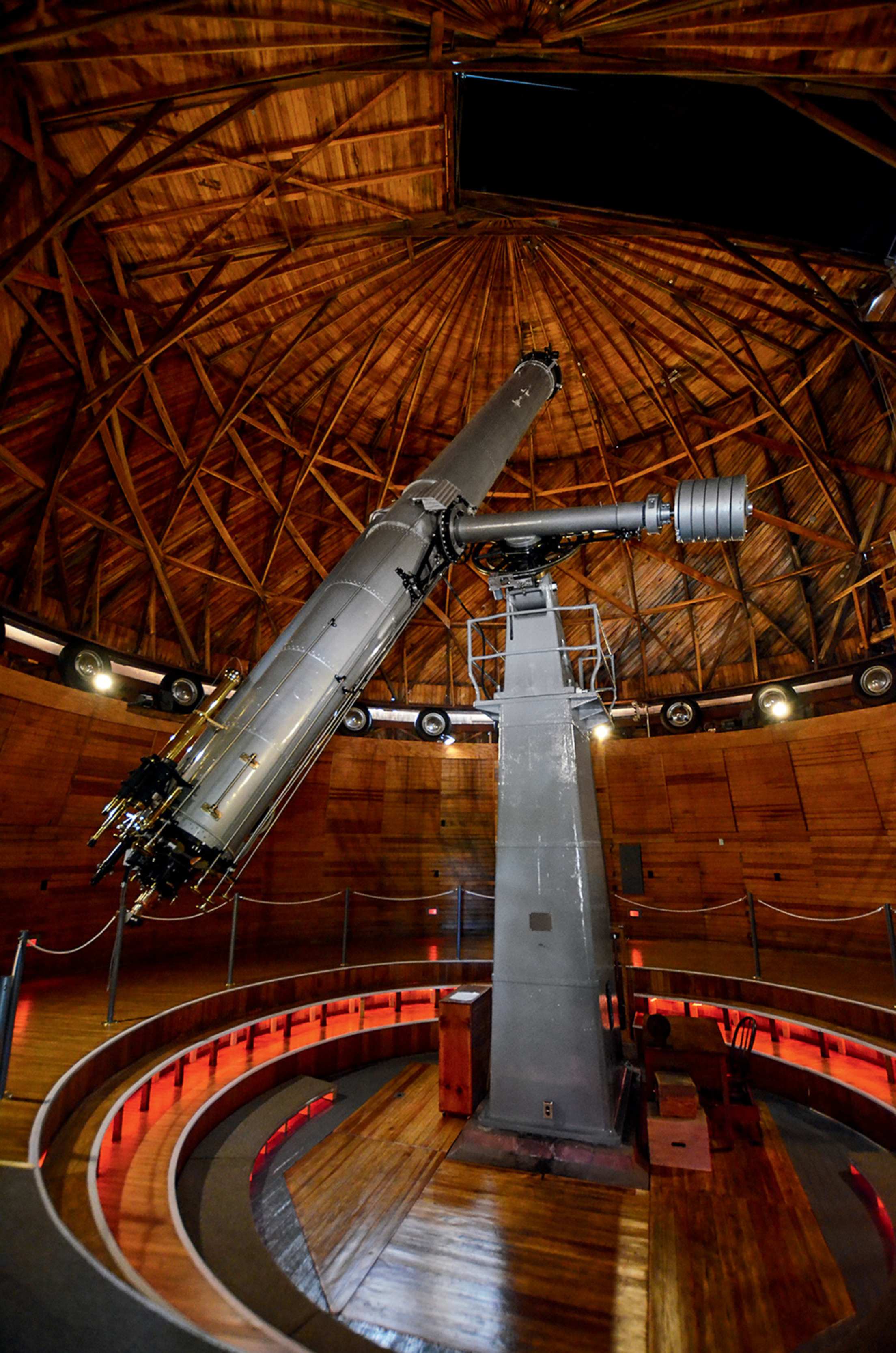
The Clark Telescope housed inside the Lowell Observatory.
Lowell Observatory, Flagstaff, Arizona
Like visitors to a new city, the Apollo astronauts needed good directions before they could navigate their surroundings. In the 1960s, U.S. Air Force cartographers gazed skyward from Lowell Observatory, then used their findings to create moon maps for the astronauts. Today, you can use the same apparatus those artists did—the gleaming, 32-foot-long Clark Telescope—to look upon the moon yourself. The views of craters, mountains, and the Sea of Tranquility (the Apollo 11 landing site) change nightly as shadows shift. "Every time I look at it, I wonder what the astronauts were thinking as they approached," says Kevin Schindler, the observatory's historian. On terra firma, you can explore Cinder Lake Crater Field nearby. The lonely volcanic area had always looked otherworldly, and in 1967, scientists dynamited the soft soil to replicate the craters at the planned landing site. Apollo astronauts later tested their buggy skills on this pseudo moonscape before venturing into space.
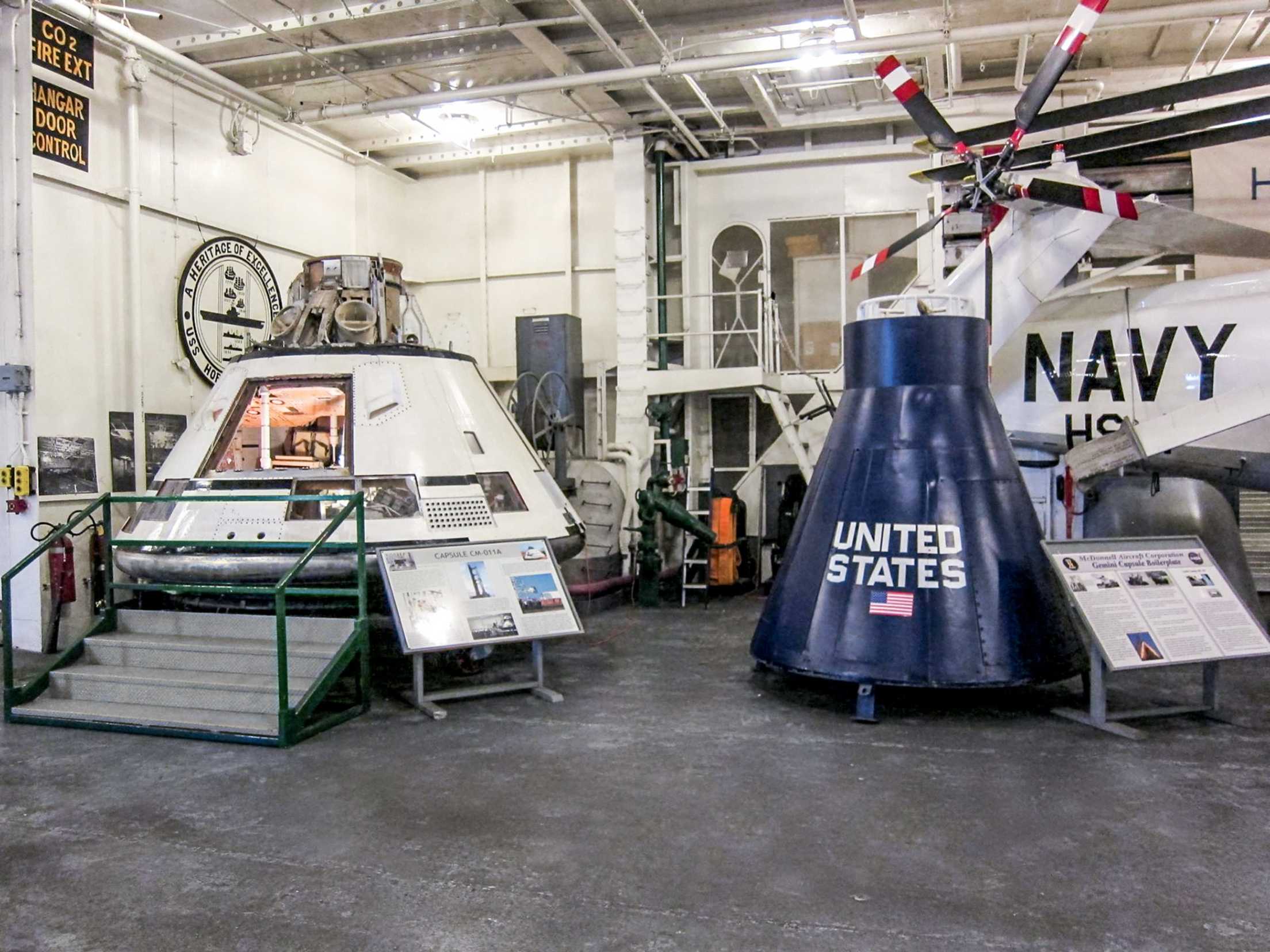
Hangar Bay 2 display at USS Hornet Sea, Air & Space Museum.
USS Hornet, Alameda, California
A World War II–era aircraft carrier may seem like an anachronism in the space race, but the USS Hornet played a key role in the Apollo 11 and Apollo 12 missions. When the astronauts on those voyages splashed down in the Pacific, the Hornet was waiting, ready to pluck them from the sea. Now a floating museum docked in the San Francisco Bay, the Hornet will fete the anniversary of the Apollo splashdown with nine days of events starting July 16. Attendees might choose to meet Hornet crew members or spend a night stargazing on the ship. Meanwhile, visitors can duck into Hangar Bay 2 anytime to see a re-creation of the lunar landing module; an Apollo test capsule dented in action; and even the "Splashdown Menu" that the ship's crew offered the astronauts. There's also a collection of cartoons, magazine covers, action figures, and other space memorabilia, early artifacts of a space craze that continues to this day.
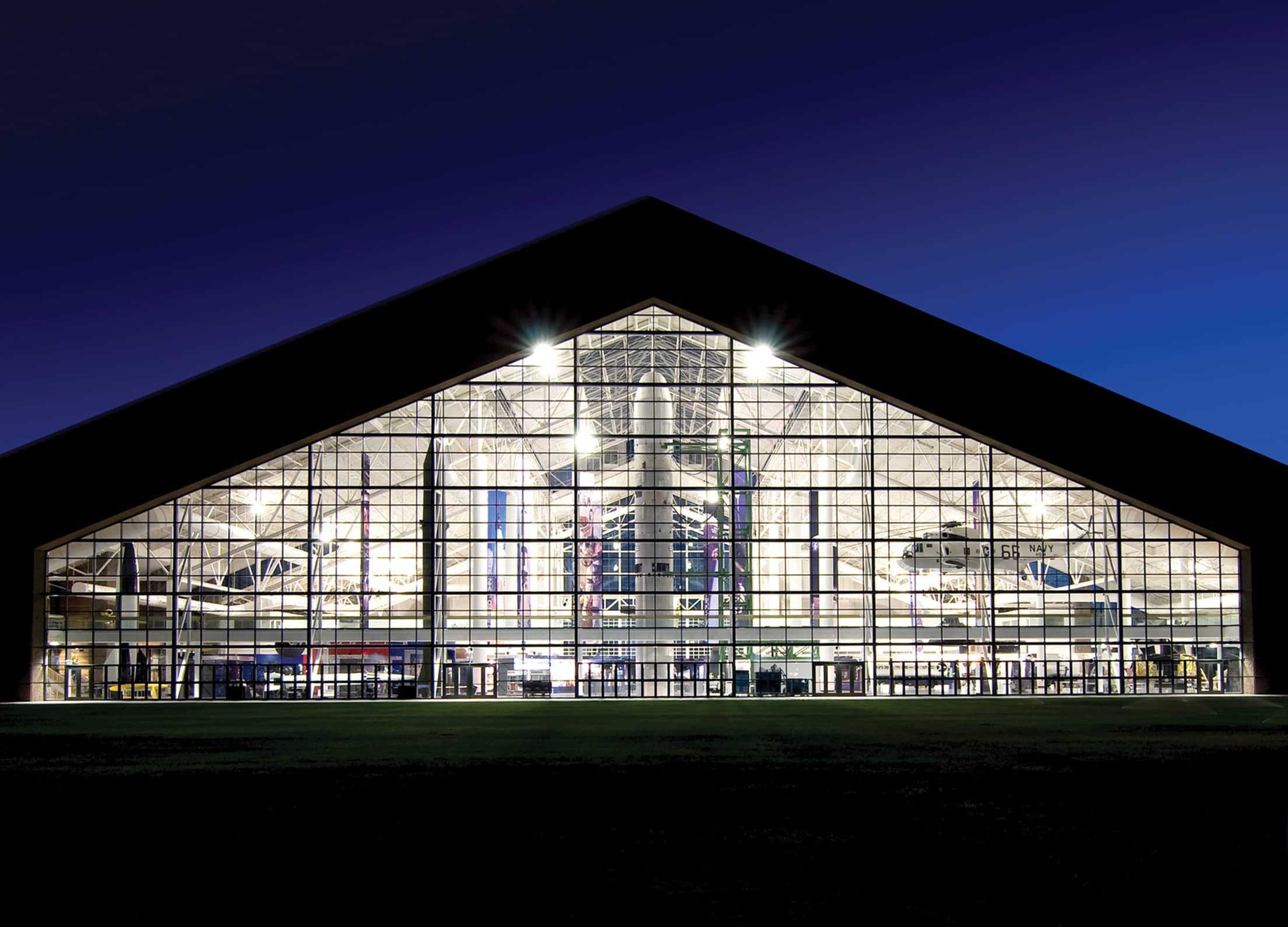
The exterior of the Evergreen Aviation & Space Museum.
Evergreen Aviation & Space Museum, McMinnville, Oregon
A huge hangar on McMinnville's east side houses an institution with lofty ambitions: Evergreen Aviation & Space Museum. (AAA members get $4 off admission.) Inside, you'll encounter some 130 aircraft and spacecraft built over the past century, ranging from a replica of the Wright brothers' first plane to an actual Mercury capsule—a one astronaut living compartment designed during the first U.S. effort to reach space. A chopper hangs from the rafters, while rockets and fighter jets are arrayed across the floor. But the pièce de résistance is the famous Spruce Goose, the unwieldy creation of Howard Hughes. Dating to the 1940s, the Goose took five years and $25 million to construct, and—at 300,000 pounds—it's the largest wooden plane ever made. Inspired to try your hand at flying? Strap into the cockpit of the Gosling, a flight simulator that pitches, rolls, and spins just like the real thing.
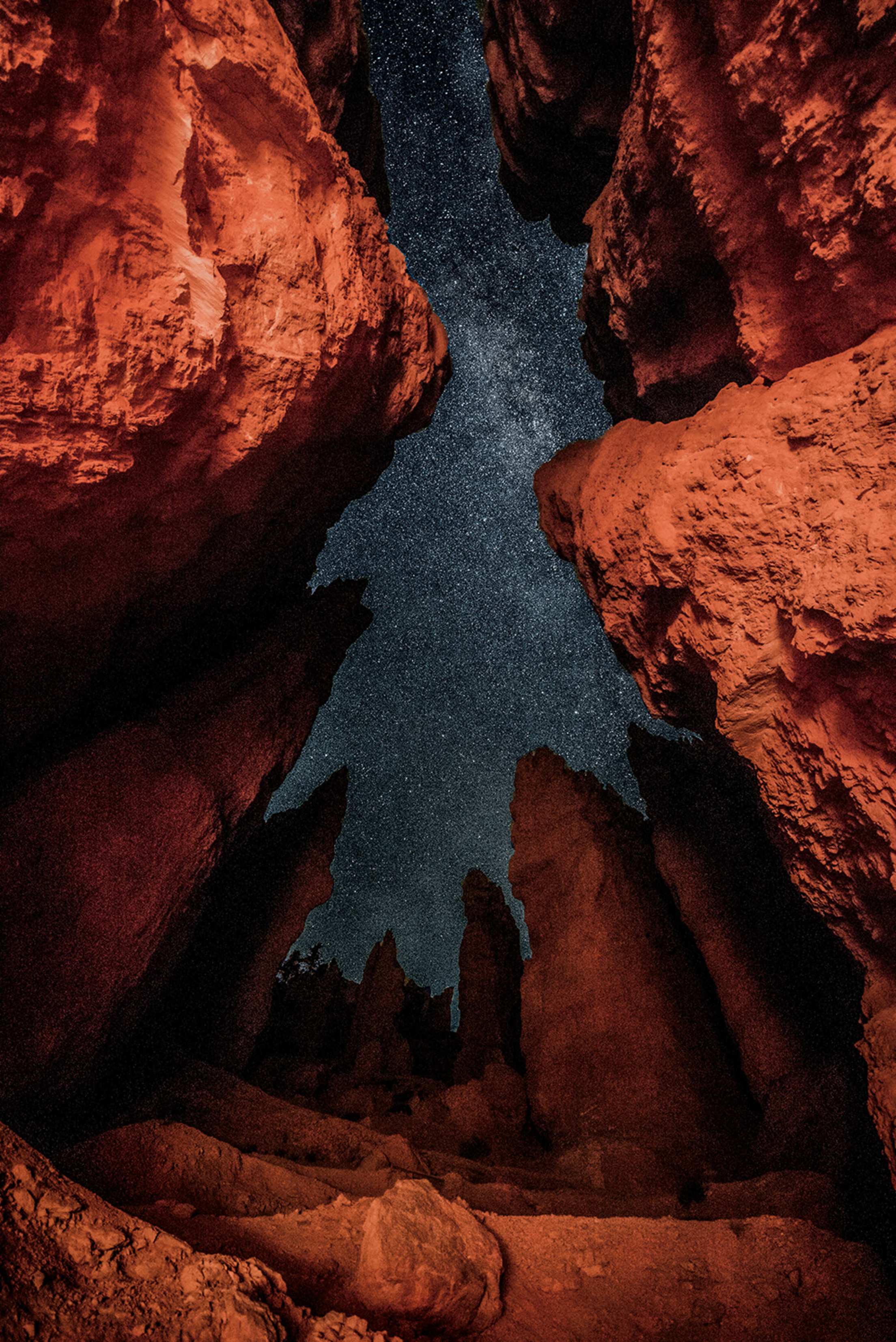
View of the Milky Way from Bryce Canyon.
Bryce Canyon National Park, Utah
The tall, spindly sandstone hoodoos at Bryce Canyon provide a magical setting for the show above: the stars as they were meant to be seen, in dark skies nearly untouched by light pollution. "When you can see the Milky Way in all its glory, it's a pretty powerful experience," notes Todd Cullings, one of Bryce's astronomers. Throughout the summer, Cullings and other astronomy rangers equipped with telescopes share the view and talk to visitors about how stars are born, where Saturn got its rings, and why there are lava flows on the moon. Even without a telescope, you can still see far beyond the usual limits of human vision, especially on clear nights with little or no moonlight. That smudge of light sometimes visible east of the W-shaped constellation Cassiopeia is the Andromeda Galaxy, a family of stars about 2.5 million light-years away. Those bits of light traveled 14.7 quintillion miles to reach your eyes. It's almost unfair: All you had to do was drive to Bryce Canyon.
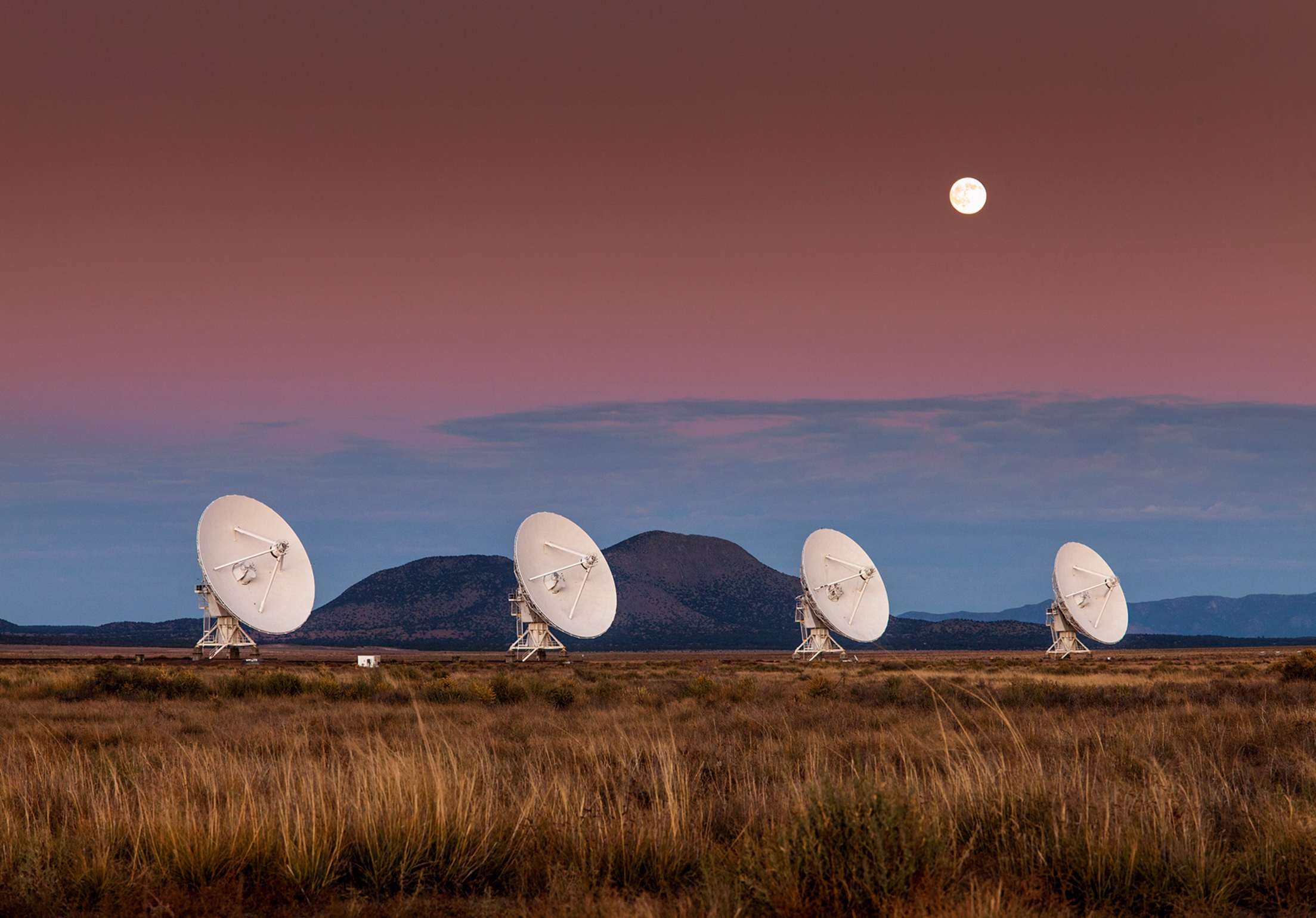
The National Radio Astronomy Observatory's Very Large Array.
Very Large Array, Socorro, New Mexico
You'll feel unusually connected to the cosmos as you stroll among the aptly named Very Large Array, a collection of 28 massive radio antennae that eavesdrop on our galaxy and beyond. The bright white dishes—which can capture signals from across the universe—cast immense shadows on a quiet, sagebrush-flecked plain about two hours southwest of Albuquerque. Each 82-foot-wide dish soaks up radio emissions from black holes, quasars, and other cosmic phenomena. Whether you opt to join a behind-the-scenes tour or explore on your own, be sure to spend a moment standing at the base of one of the 230-ton antennae, where you can sense the true scope of the scientific enterprise. The VLA famously appeared in the movie Contact, featuring Jodie Foster. Now you can hear her voice anytime you stop by, narrating the introductory film in the visitor center.

A digital re-creation of Jupiter lights up the Morrison Planetarium.
Morrison Planetarium, San Francisco, California
With stars and galaxies faithfully rendered upon its massive curved screen, this latest-generation, all-digital planetarium at the California Academy of Sciences offers nearly pixel-perfect re-creations of outer space, no liftoff required. As you lean back in your seat and gaze upward, you'll see each object in its rightful place in the universe. Near the middle of the presentation, academy scientists will even pipe up to mention astronomical discoveries so recent that they didn't make it into the show. Depending on when you visit and which presentation you catch, you might hear Tom Hanks musing on star nurseries, George Takei holding forth on asteroids, or Sigourney Weaver narrating a show on (what else?) potential habitats for extraterrestrial life.

The Alien Research Center in Hiko, Nevada.
Extraterrestrial Highway, Nevada
You likely lack the security clearance to enter Area 51, a highly classified military installation in the desert northwest of Las Vegas that's steeped in folklore and alien-related conspiracy theories. (Some say that the secrets here include captured aliens and crashed spacecraft.) But you can cruise down the 98-milelong road that runs closest to its entrance: State Route 375, aka the Extraterrestrial Highway. The two-lane road slices through a huge, eerily quiet basin flanked on either side by distant blue peaks. Fewer than 200 cars travel this route daily, so if you start feeling lonesome, make a stop near the road's halfway point in Rachel. The quirky town is home to the trailer park that starred in Independence Day, as well as the Little A'Le'Inn, a roadside diner that offers burgers alongside Alien Amber Ale and E.T. plushies. The Alien Research Center in nearby Hiko, housed in a hangar guarded by a huge metallic alien, isn't quite as scientific as the name implies. Lab coats, microscopes, and probes? No. I LOVE ALIENS pins and Area 51 T-shirts? Affirmative.

Alien statues on display in UFO Museum & Research Center.
International UFO Museum & Research Center, Roswell, New Mexico
By the 1940s, space exploration had seized the popular imagination, and that imagination sometimes ran riot. The fervor peaked in July 1947, when something fell from the sky near Roswell, N.M. An air force press release called the object a "flying disc," but a follow-up notice claimed it was just a weather balloon. Alien or mundane, the crash sparked a nationwide frenzy of UFO mania. In the early 1990s, Walter Haut—author of the original press release—joined forces with Glenn Dennis, a local resident at the time of the incident, to harness that enthusiasm and open the International UFO Museum & Research Center. Set in an old movie theater, the institute displays a diorama of the alleged saucer crash, a container of dirt from the landing site, and "life-size" alien models. After checking out the alien-head cookie jars in the gift shop and the silver saucer hanging from the ceiling, you'll come home with indisputable proof: Roswell is real, and it's worth a visit.
Spend less on entertainment by using your AAA discount at movie theaters, sporting events, and popular attractions.